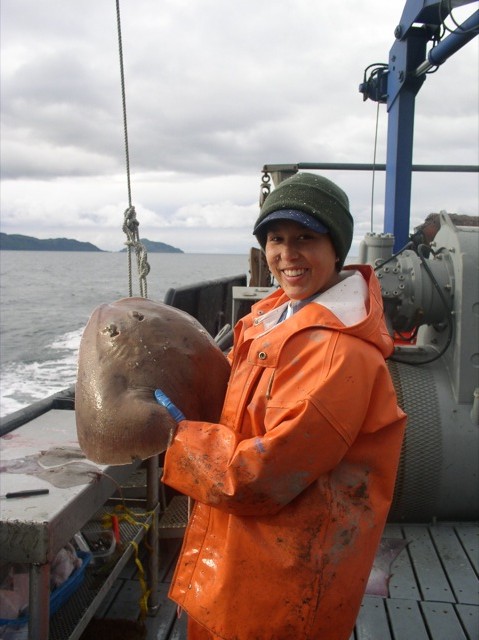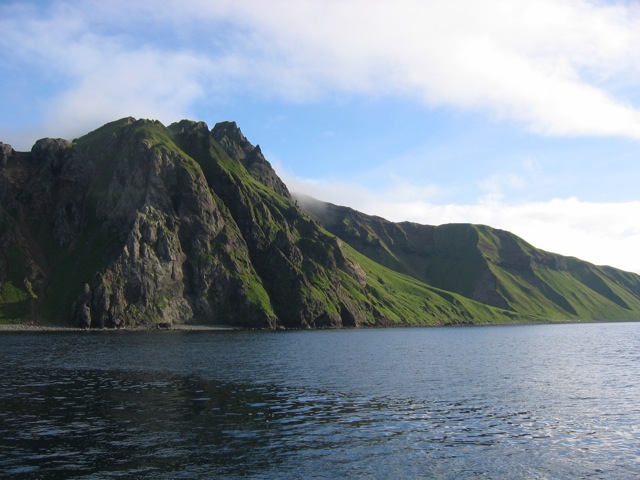
by Shaara Ainsley, Ichthyology Lab
Long hours in a tiny, dark windowless room looking through a microscope – yes, this is very much a part of a marine biologist’s job description. Not really the fun and exciting part, but this type of data collection is very, very important. For my thesis and additional projects, I spent well over 100 hours (probably closer to 200!) in the microscope room. In order to estimate the age of a skate, you need to examine its vertebrae and count the number of bands. In order to get a ‘good’ estimate of the growth of a fish over time, you must examine many vertebrae from fish at all different sizes.

The microscope is necessary, since the largest vertebrae are about the size of the eraser on top of a pencil, and the smallest vertebrae can be as small as 1/10 of an inch in diameter! The biggest challenge I have experienced was trying to locate a little white vertebra that I accidentally dropped on the white linoleum lab floor. For the record – the vertebra was located!
However, studying skates can have its perks – the most interesting aspect of my work was spending time on the Alaska Department of Fish and Game boat the RV Resolution. I really enjoyed spending each day sorting through fish and seeing what we found on the bottom of the sea. It was an opportunity to meet interesting people who have spent their lives working on boats. The views of the Alaskan coast were astounding. I was completely spoiled by the breathtaking scenery and photos just can’t do it justice. While the days were long, and the work was not easy, I would do it all again if I could. We also had access to a whole variety of candy and ice cream, so I think that helped us stay on track and work hard…


